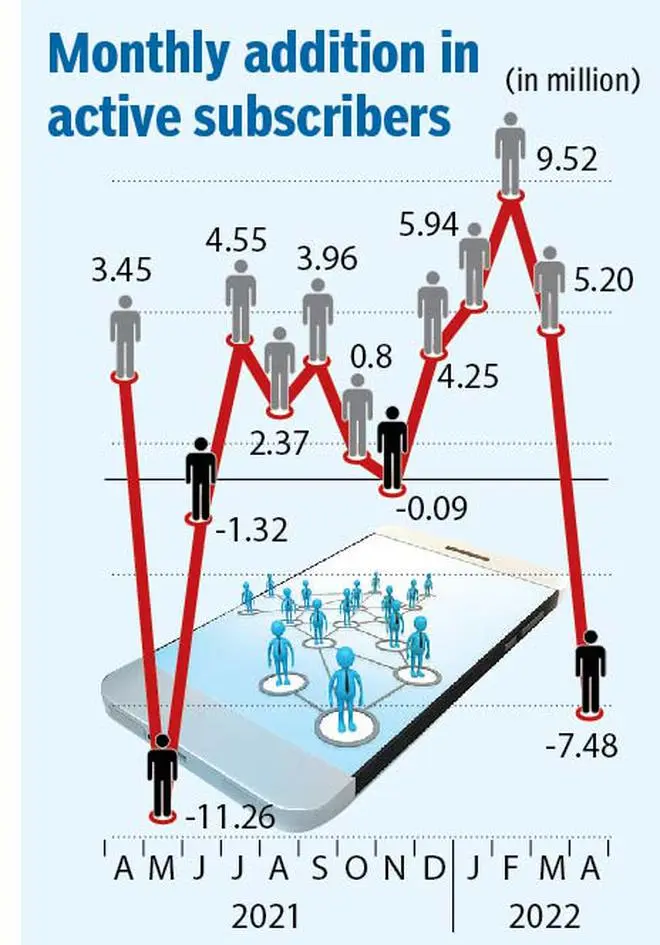
Analysts suggested that there could be more disconnections even as the telecom operators are gearing up for another round of tariff hikes | Photo Credit: SINGARAVELOU T
The increase in mobile tariffs has forced 7.5 million active mobile subscribers to give up their connections in May. This is the first time that the active subscriber base has declined in the past 10 months.
While the overall subscriber base has been dipping over the past few months, most of the disconnections were by users with multiple sims or low-end consumers who were largely categorised as inactive subscribers. On the other hand, active subscribers are those who recharge their connections at least once in 90 days.
Cash strapped operators, Vodafone Idea, Reliance Jio and Bharti Airtel, took 20-25 per cent tariff hikes in their mobile plans at the end of November 2021. Analysts suggested that there could be more disconnections even as the telecom operators are gearing up for another round of tariff hikes in a bid to recoup their investments.

For Indians on the economic margins, a 15-20 per cent increase in tariffs could mean that they have to let go of their mobile subscription. This could have wider ramifications as a lot of social welfare schemes in India depend on mobile connectivity. For example, under the Jan Dhan Aadhaar Mobile Initiative, the government directly transfers subsidies to its beneficiaries. This includes access to life insurance, accident insurance, pension schemes and LPG for the poorest of the poor. Beneficiaries for Pradhan Mantri Garib Kalyan Anna Yojana also need to have their ration cards linked with mobile numbers.
Technology researcher Srinivas Kodali said, “While the government has options for the poor to potentially access these schemes without mobile numbers, it becomes very hard for the poor to navigate a digital state without a phone. Poor people will have to shell out more money to access these services from the common service providers.” Kodali notes that access to the internet increases earning opportunities and access to social mobility massively for the poor.
Telecom operators are, however, not worried about losing subscribers as they are shifting their focus to increasing revenues. With 5G around the corner, telcos are looking at a major increase in capital expenditure which would make an increase in mobile tariffs necessary. Peeyush Vaish, partner and telecom sector leader in Deloitte, noted, “Operators will have to increase their tariffs by 15-20 per cent in the next year or so in order to be financially sustainable. More importantly, operators will have to get rid of their bottom-most subscribers to increase their Average Revenue Per User (ARPU) as well.”
Ravinder Takkar, CEO of Vodafone Idea, said in his Q4FY22 earnings call that the industry needs to boost up its ARPU to ₹200 at least, and another hike in mobile tariffs is necessary this year. “Mobile tariffs make a small portion of the consumer wallet, thus another two tranches of price hikes can be possible,” Takkar had said.
Published on June 17, 2022

Comments
Comments have to be in English, and in full sentences. They cannot be abusive or personal. Please abide by our community guidelines for posting your comments.
We have migrated to a new commenting platform. If you are already a registered user of TheHindu Businessline and logged in, you may continue to engage with our articles. If you do not have an account please register and login to post comments. Users can access their older comments by logging into their accounts on Vuukle.